LA opens U.S. car show season in style
By John Gilbert
LOS ANGELES, CALIF. — Electric cars remain the hot topic in the automotive world, but the bright lights and the glitz of the Los Angeles Auto Show displayed highlights ranging from super sports cars — such as the Jaguar C-X75 and Mazda Shinari concepts — to surprising style for everyday commuters — led by the Hyundai Elantra and the Subaru Impreza. Those four create a gap, between the $14,000 Elantra and the unobtainable six-figure stratosphere of the Jaguar or Mazda concepts — if, that is, those futuristic cars ever reach production status.
In between, there were countless attractions, requiring careful scrutiny. Those who stick to the mainline displays in either the South or West halls of the Los Angeles Convention Center might miss the Lotus stand, which had a whole herd of some of the flashiest vehicles in the show in a little niche spot in the concourse. Read more
Regal name revived for new Buick ace
By John Gilbert
The Buick Regal is dead; long live the Buick Regal! We might all remember the Regal over the last three decades as perhaps the most sensibly sized Buick amid a herd of gigantic, oversized sedans. After it was discontinued, and Buick teetered on the brink of extinction in the whole General Motors scheme of survival, it is now coming back. And it is worth the fanfare it is stirring up.
When General Motors was first saved itself by a government loan bailout, and then restructured itself by eliminating Pontiac and Saturn, cynics might have wondered why Buick — with its aging buyer demographics — survived. A new Enclave thrust Buick into the SUV market, and then a new Lucerne luxury boat, and a revised LaCrosse were introduced, but they were less than convincing evidence that Buick had more staying power than its deleted cousins.
For 2011, Buick has an all-new midsize car, and it is calling it the Regal. It is, arguably, the best car ever offered by Buick. For certain, it is the most contemporary car the marquee has ever offered, and its timing could be pivotal.
Through the years, GM has kept it subdued about how it is globalizing itself, letting its loyal customers carry the “buy American” torch for them. It’s not heart-warming to reveal that you are building your cars outside U.S. borders, in Canada or Mexico or beyond, while you close more than a dozen U.S. plants and lay off all those workers. But with the Regal, GM is blatantly boasting about its European roots. Not only does it have European styling, the ads go, but it is built in Europe right alongside the Opel Insignia.
<!– AddThis Button BEGIN –>
<div>
<a href=”http://www.addthis.com/bookmark.php?v=250&username=xa-4d06b7d4328963ff”>Share</a>
<span>|</span>
<a></a>
<a></a>
<a></a>
<a></a>
</div>
<script type=”text/javascript” src=”http://s7.addthis.com/js/250/addthis_widget.js#username=xa-4d06b7d4328963ff”></script>
<!– AddThis Button END –>
With good reason. Opel is GM’s European arm that GM actually tried to sell off, but failed — fortunately for GM. Opel is greatly responsible for helping save GM from itself in recent years. The popular Opel Vectra that was remodeled to become the Saturn Aura, a car that won North American Car of the Year when it really was a three-year-old Vectra. A year later, a four-year-old version of the Vectra became the Chevrolet Malibu, also winning North American Car of the Year.
As time changed the face of GM in the U.S., Opel redesigned the Vectra and called it the Insignia. It came out in 2008 as a 2009 model, and won European Car of the Year. But Saturn no longer exists. Buick, which has been selling rebadged Opels in China, where it gained a pretty secure foothold — a fact that may well be the key reason Buick outlasted Saturn and Pontiac — is the recipient of Opel’s newest car, with the Insignia name changed to Buick Regal for the U.S.
Jim Federico, Buick brand manager, said, “Six years ago, Bob Lutz sent me to Europe, and the Opel Insignia was the first new car I had direct contact with. The Regal is being made side by side with lthe Insignia in Germany, although we’ll make it in Oshawa [Ontario] starting in the second quarter next year. We sold the first Buick Regal in China in December of 2008, and we plan to build them in Europe, Asia, and the U.S.”
It is a compact midsize, with very stylish contours, set off with what I think is one of the most subtle but significant contour lines in the industry right now. It handles with a stiffness that might scare away the aging and traditional Buick buyers of the past, but will surely attract new buyers who are either younger — Buick’s objective — or more sporting and aggressive. Stiff, or firm, in this context, isn’t to say harsh. So Buick traditionalists who think that if the body doesn’t lean over far enough to scrape the door handles in tight turns, it must be uncomfortable, needn’t worry. It stays pretty flat and stable in cornering, but still is compliant enough to be comfortable.
If Buick did almost everything right in bringing in the Regal, it falls a bit short of perfection because GM hasn’t yet produced the new and high-tech four-cylinder we’ve been hearing about. So the Regal starts with a 2.4-liter four that has direct injection, which is the new buzzword in high-tech engines. However, the 2.4 doesn’t approach the lively feel of same-size fours in the Hyundai Sonata, Kia Optima, Ford Fusion, Mazda6, of Nissan Altima, and even the enlarged Honda Accord and the unaggressive Toyota Camry have some zing.
The problem is that the Regal, which has 20 percent improved chassis stiffness than the Malibu, still weighs 3,600 pounds. That’s a lot. Buick marketeers said that it is 200 pounds lighter than a LaCrosse, which begs the question that it’s ONLY 200 pounds lighter than the LaCrosse — which is 6 inches longer in length and 4 inches longer in wheelbase. With high-grade steel used liberally at stress points and in key pillars, more than in any previous GM sedan, the Regal understandably has a solid feel, and it handles well on curvy roads, too.
Buick is just about to introduce a solution to its underpowered stature, with a turbocharged 2.0-liter four on a GS sporty model. That should help substantially. The standard 6-speed automatic will also get a 6-speed manual version with the turbo, and it would be interesting to scan Buick history to see when the last Buick was offered with a stick.
As it is, the Regal is impressive from the driver’s seat, even before you start the car. Seats are supportive, and the instrument panel and controls are all very European and stylish. A lot of black background is a welcome relief from the sometimes grotesque attempts and flashy lines and shapes some manufacturers have been trying. I can go back to a childhood friend, who had a sister who loved Buicks, and often gave us rides to the ballpark in a 1957 Buick, which had a sweeping panoramic instrument panel — 50 years ago! Simple, round gauges, outlined with a thin bright chrome ring, are much appreciated in the new Regal, and makes you feel as though you definitely are in a European car.
But the striking style of the Regal is still going to be its prime attraction. I organized a small-scale car show at the Aagesen Chiropractice Clinic, which was holding a “Guys Night Out” event a couple of months ago. I selected various new models that I thought would be big hits among the new 2011 models, and all the dealers in the West Metro region of Minneapolis that I contacted were anxious to participate. The Regal was one of them, and even though we had a number of very stylish cars from around the world, including the Jaguar XJ, a Corvette, a Mustang, Hyundai Sonata, Volvo C70, and others, the Regal seemed to be the biggest surprise among those who commented about styling.
My favorite element is on the side, where the well-proportioned and wind-tunnel-tuned shape looks good. There is a small contour that drops down diagonally on the front door, and runs horizontally toward the rear. It might not seem all that flashy, but it subtly creates a line that traces the rising A-pillar and roofline in reverse, like a reflection. Subtle as it is, it makes a very neatly coordinated accent to the appearance.
Perhaps the most significant indication of what Buick has done with the Regal came back in early summer, when we gathered at the Towers21 Hotel in San Diego — one of my favorite hotels in the world. It’s not very big, maybe four floors, but it is very modern, and as neat are the rooms are, the decks afford spectacular daily views of the Pacific Ocean waves rolling onto the sandy beach, while the sun sets on the horizon. It’s worth the trip, just for that.
We were there to get our first exposure to the Regal, however, and we were given a technical background seminar, The first statement came from John Schwegman, Buick’s vice president of marketing. “It’s not easy to change perceptions, but with the Enclave and LaCrosse showing 25 percent conquest sales, we think we’ve started changing the image of Buick,” Schwegman said. “We think the Regal will be the next big part of Buick becoming a brand with a ton of upside. The terms ‘performance’ and ‘Buick’ haven’t been discussed in the same conversation for a lot of years,”
Later, we went outside into the morning sun to pick our test-drive vehicle from the group of Regals lined up all in a diagonal row at the sidewalk. As we stood by our selected Regal, a fellow came by, carrying his surfboard over one shoulder and heading for the beach. He stopped and said, “Hey, dude, what’s with all the beautiful Buicks around here?”
It’s been more than just a long time since any California surfer dudes accused any Buicks of being beautiful, too.
Leaf promises green future for Nissan
NASHVILLE, TENN. — It is inevitable, apparently, that while some of us remain loyal to the contemporary sophistication of internal combustion gasoline and/or diesel engines, our cars of the future will be powered by electrical energy. The Nissan Leaf doesn’t promise to jolt us with the future being already here, but it will be on U.S. roadways by the first of the year 2011.
The Leaf is a pure, plug-in electric vehicle, which will reach showrooms by December of 2010 in seven Western and Southwestern states, and its spread through the rest of the country is as inevitable as the morning light. Or, at least the light from a plug-in lamp. Those of us in the Upper Midwest could buy a Leaf as soon as it’s available and make it work just fine, it’s just that Nissan has worked with those specific entry regions to coordinate things, including such elements as an infrastructure of recharging stations.
Nissan’s all-electric Leaf has no coordinated gasoline engine, as in hybrids, and no gasoline engine to come on after the battery pack is drained to keep you running, as in the newly introduced Chevrolet Volt. There is just plug-it-in-and-go electricity powering the Leaf, which has allowed Nissan to boast that it is the first affordable all-electric vehicle. The Chevrolet Volt is impressive, but will find resistance among buyers who wouldn’t mind electrifying their driving, but might balk at $43,000. The Leaf, Nissan says, will be more like $25,280, although that is after a $7,500 federal tax incentive for emission-free vehicles. First drives of the Leaf are impressive, and a little eerie. Read more
Remarkable autumn for Minnesota-Duluth sports teams
By John Gilbert
The sports teams and their followers at the University of Minnesota-Duluth are neither cocky nor arrogant. They make no assumptions of success, simply because UMD hasn’t had consistent enough doses of winning in various sports to assume anything of the sort. Nonetheless, UMD’s highest-profile teams are compiling an amazing and unprecedented run of good fortune to escorted this rapidly passing autumn of 2010 at the westernmost tip of Lake Superior.
If you combine UMD’s football team with men’s and women’s hockey — UMD’s two Division I teams — I’d have to see the records to prove there has ever been a more successful start to their seasons. Consider that the football team is soaring at 9-0, while the men’s hockey team has gotten off to a 6-0-2 start, meaning those two teams have gone undefeated with a combined 15-0-2 record. If you add in the UMD women’s hockey team, which stands 7-1, the three have an aggregate 22-1-2 ledger.
The achievements have been duly noted. UMD ranked No. 2 in NCAA Division II in the country, before beating St. Cloud State 40-17, while No. 1 Grand Valley State lost 20-17 to Michigan Tech. Both the UMD men and women ranked No. 3 in hockey, before the Bulldogs swept the archrival Minnesota Gophers 3-2, and 4-2 with an empty-net goal, and before the men went to Bemidji State and won 3-2 in overtime before playing a tough, 1-1 deadlock. Read more
Twins fall to Yankees no reason for panic
By John Gilbert
If you’ve been watching the 2010 Major League Baseball playoffs, you’ve seen pretty much everything the game has to offer. Great pitching, great hitting, great defensive plays, and, on the other side, some surprisingly lousy pitching, some ineffective hitting, and some botched defensive plays. Unfortunately, the overriding factor you take away from a lot of the games is how some blown umpires calls can affect the outcome of a game, or in some cases, a season.
The Minnesota Twins just happened to be the prime example. But not the only one. The Twins had Game 2 of their three-and-out series with the Yankees take an ugly turn when a clearly blown strike three call that would have ended the seventh inning was called a ball, and the next pitch wound up triggering a rally that sank the Twins 5-2. It was fun to watch the other games, with the Phillies handling Cincinnati much the same as the Yankees handled the Twins, and San Francisco stifling Atlanta in the National League.
When Texas went to Tampa Bay and beat the Rays twice, I winced, because I like to watch the Rays. In that series, an ump called a ball on a checked swing, then asked the third-base ump for verification, and he, too, said there was no swing. The replay showed clearly that the head of the bat had gone across home plate, so both umpires blew it. It happens, because they’re human. Often, you watch a baseline umpire seem too eager to call a strike when it appears the batter holds up, only to have slow-motion replays vindicate the call by proving the bat crossed the plate farther than what the viewer would have guessed. This time, the umps were unusually conservative, and, as fate would have it, the next pitch — bang! — game-changing hit. That call was vitally responsible for the Rays to go down 2-0 in games and having to go to Texas, just as the Twins had to go to New York down 2-0.
The difference, though, was the Rays erupted, found their old groove, and beat Texas both games. That sent the series back to Tampa Bay for a deciding Game 5. Texas won Game 5 with a strong performance, meaning the road team won all five games. But it doesn’t matter who won at that point, it wa’s a great series. Just as, if the Twins had beaten the Yankees twice in New York, forcing Game 5 at Target Field, even Minnesota fans could have lived with whatever outcome evolved.
As for the Twins, before the playoffs I suggested a major concern about the series. Twins manager Ron Gardenhire, a man I greatly admire, had given a number of Twins time off during the last two weeks of the regular season, and the Twins wound up losing eight of nine. Joe Mauer, who might be the best hitter in baseball, was rested, and probably needed it. But he had been the hottest hitter on the hottest team before the late swoon. I mentioned that when a hot team is hot, there’s no susbstitute for that rhythm of success, but when the hot hand goes away, there is no way to automatically get it back.
I identified my concern as a bad premonition if the Twins were to falter against the Yankees, and I think that’s the best explanation for what happened. You could say the Twins always seize up against the Yankees at playoff time, and that would be correct. You could point to pivotal umpire calls, which turned an inning, a game, and maybe a series. But mostly, there was no rhythm, no semblance of the red-hot Twins we got to know and love from the All-Star break on. And Joe Mauer, the face of the Twins, had an expression of concern throughout that series. He looked like anything but the best hitter in baseball.
For 162 game a year, Joe’s habit works: He always takes the first pitch, and if it’s a ball, he generally keeps taking pitches until he gets a strike. Then he hits with amazing frequency. I’ve seen the trend of Mauer’s habit turn into a formula for opposing pitchers. It has allowed pitchers to establish a “book” on Mauer. They groove a fast ball for strike one, then get serious and deal with him. It makes Mauer’s achievements more noteworthy, because he is essentially giving himself only two strikes to hit. If I could counsel Joe Mauer, I would suggest that he makes one small alteration in his habit. In one at-bat of each game, he should go to the plate with the idea that he’ll load up for the first pitch. If it’s anything but perfect, take it, as usual, but be looking for a fastball down the middle, and if you get it, swing from the heels. First of all, he’d probably double or triple his home run total, but more importantly, opposing pitchers would suddenly realize they no longer had a freebie on the first pitch. They’d become more careful on the first pitch, and Mauer would end up with a lot more 1-0, 2-0 and 3-1 counts, than always facing 0-1.
In the playoff series, looking out of sorts and still taking that first strike, Mauer looked awful at the plate. He struck out three times in one game. Granted it was CC Sabathia, one of the best left-handers in the game, who did it, but he did it with an easy first strike and then a bunch of breaking balls. In the final game, when Mariano Rivera came in to close it, Mauer led off. I was silently pleading for him to hit the first pitch. He didn’t. Rivera grooved less-than-his-best fastball for strike one, then threw three tough sliders that broke down in the dirt, and Mauer struck out.
Mauer wasn’t the only problem, but he was the poster boy for the Twins struggle. As a group the Twins were not hot. They played well in Game 1, taking a 3-0 lead, as Francisco Liriano outpitched Sabathia through five innings, but we knew the Yankees would come back, and they did, turning the game around and winning the opener. In Game 2, Carl Pavano matched Andy Pettitte in a 2-2 duel. Pavano walked Jorge Posada, and with two out was facing Lance Berkman. With a 1-2 count, Pavano threw a 91-mph fastball on the inside corner. Great pitch, impressive strikeout. Incredibly, umpire Hunter Wenderstedt called it a ball. The replay with the little strike-zone box showed the pitch was clearly over the plate, an inch or two in from the left edge, and it was belt-high. A textbook strike. Pavano, who had taken a stride toward the dugout, sure that it was a strikeout, stopped and went back up on the mound. Next pitch — bang! — line drive over Denard Span’s head in center. Instead of an inning-ending strikeout, there was a tie-breaking hit. Couple guys later, Derek Jeter singled in another, making it 4-2, and it wound up 5-2. Gardenhire came out to settle down Pavano and the team, and when he tossed his opinion of how Wenderstedt had affected the game, the ump threw him out.
Naturally, going to New York down 0-2 was different than being 1-1, and it wasn’t a second guess that I thought the 0-2 situation called for Gardenhire to alter his series plan. He had tabbed Brian Duensing as the starter. Duensing had been elevated to a starting role back when the young Twins pitching staff was terribly inconsistent. His off-speed southpaw hurling was effective in letting the Twins get by for many games. Later in the season, when the Twins got hot, I thought harder-throwing pitchers such as Scott Baker, Kevin Slowey and Nick Blackburn all had gotten things together pretty well. At least until that late, reserve-filled stumble, when more than the starting pitching was lacking. Starting Duensing if the series was 1-1 would have been an intriguing experiment. But down 0-2, with the season on the line, I would have been more comfortable with Baker, Slowey, or Blackburn starting. All three of them can throw harder than Duensing, who might have been a huge improvement from what was going on in the bullpen.
Listening to the national ESPN radio broadcast of the games, where John Miller again proves he’s the best play-by-play man in baseball, former pitcher Orel Hersheiser was his color man.In the fourth inning, when the Yankees were up 2-0, Hersheiser mentioned that at that point, Duensing had not yet thrown a single strike where the Yankees had swung and missed. Now, that is insight. Sneaking around the corners for a strike is one thing, but every time a Yankee swung at a Duensing pitch, there was contact. Ouch! Sure enough, the Yankees shelled him. Baker came in to relieve and threw an impressive 1-2-3 inning, and even though he later gave up a home run, at least he threw a half-dozen pitches right past the Yankee hitters. The damage, however, had long been done in a 6-1 loss to end the Twins season.
When it was over, all the cynics jumped on the Twins as being woefully inept. No, they weren’t. They weren’t on top of their game, but still they were only a solid hit here, or a good umpire’s call there, away from winning a game or two. Winning one, at any time in the series, might have gotten the Twins untracked. True, the Yankees have the Twins number, but everyone is acting as though the Twins are awful, and that the Yankees are invincible. In reality, the Yankees are very good, and they rise up to play their absolute best at playoff time. Suddenly the pitchers all look good, and their lineup suddenly looks potent throughout.
But the Yankees were the American League’s wild-card team, losing the East Division race to Tampa Bay. That was one reason I was pulling for Tampa Bay to beat Texas. The Rays are NOT intimidated by the Yankees, and they could — and I think would — beat them head-on in the league final. Texas did the job anyway, proving to be cool and poised, and it was interesting to watch the Yankees appear less than supremely confident in that series.
In the National League, the Phillies, with the best starting pitchers in baseball, needed a four-error meltdown by Cincinnati to overcome a 4-0 Reds lead in Game 2, and went on to eliminate the National League’s best scoring team in three straight, while San Francisco knocked out Atlanta. That made for a great National League final series, where the Giants unseated the Phillies.
As usual, the World Series promised to be a fun party. Too bad the Twins misplaced their invitation.
The critics continue to insist that the Twins need wholesale changes. They don’t. It’s all in the attitude, and the doomsayers who are demanding wholesale trades because of the playoff setback are more fragile than the Twins. In fact, without a single change, the Twins will be easy favorites to repeat as division champs. There is no rule that the Yankees must play better than they are against the Twins, or that the Twins must face the Yankees with the attitude that a safe is about to fall on their heads from the top of the Empire State Building. If Justin Morneau comes back from the lingering concussion effects, we can count on that young pitching staff to be better, incrementally, and the Twins will be fun to watch. It would even be fun to see a rematch against the Yankees in the playoffs.


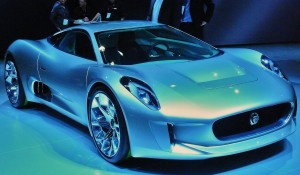
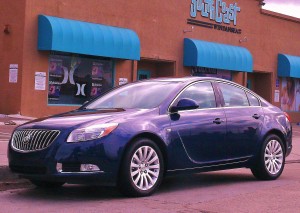
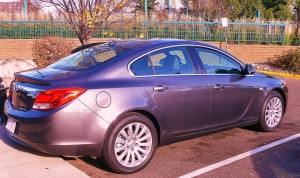
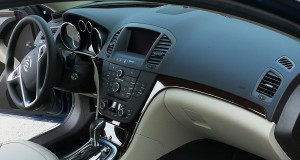
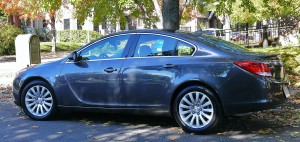
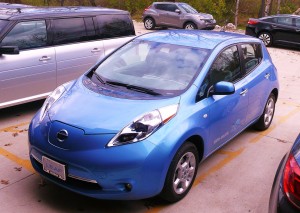
 John Gilbert is a lifetime Minnesotan and career journalist, specializing in cars and sports during and since spending 30 years at the Minneapolis Tribune, now the Star Tribune. More recently, he has continued translating the high-tech world of autos and sharing his passionate insights as a freelance writer/photographer/broadcaster. A member of the prestigious North American Car and Truck of the Year jury since 1993. John can be heard Monday-Friday from 9-11am on 610 KDAL(www.kdal610.com) on the "John Gilbert Show," and writes a column in the Duluth Reader.
John Gilbert is a lifetime Minnesotan and career journalist, specializing in cars and sports during and since spending 30 years at the Minneapolis Tribune, now the Star Tribune. More recently, he has continued translating the high-tech world of autos and sharing his passionate insights as a freelance writer/photographer/broadcaster. A member of the prestigious North American Car and Truck of the Year jury since 1993. John can be heard Monday-Friday from 9-11am on 610 KDAL(www.kdal610.com) on the "John Gilbert Show," and writes a column in the Duluth Reader.